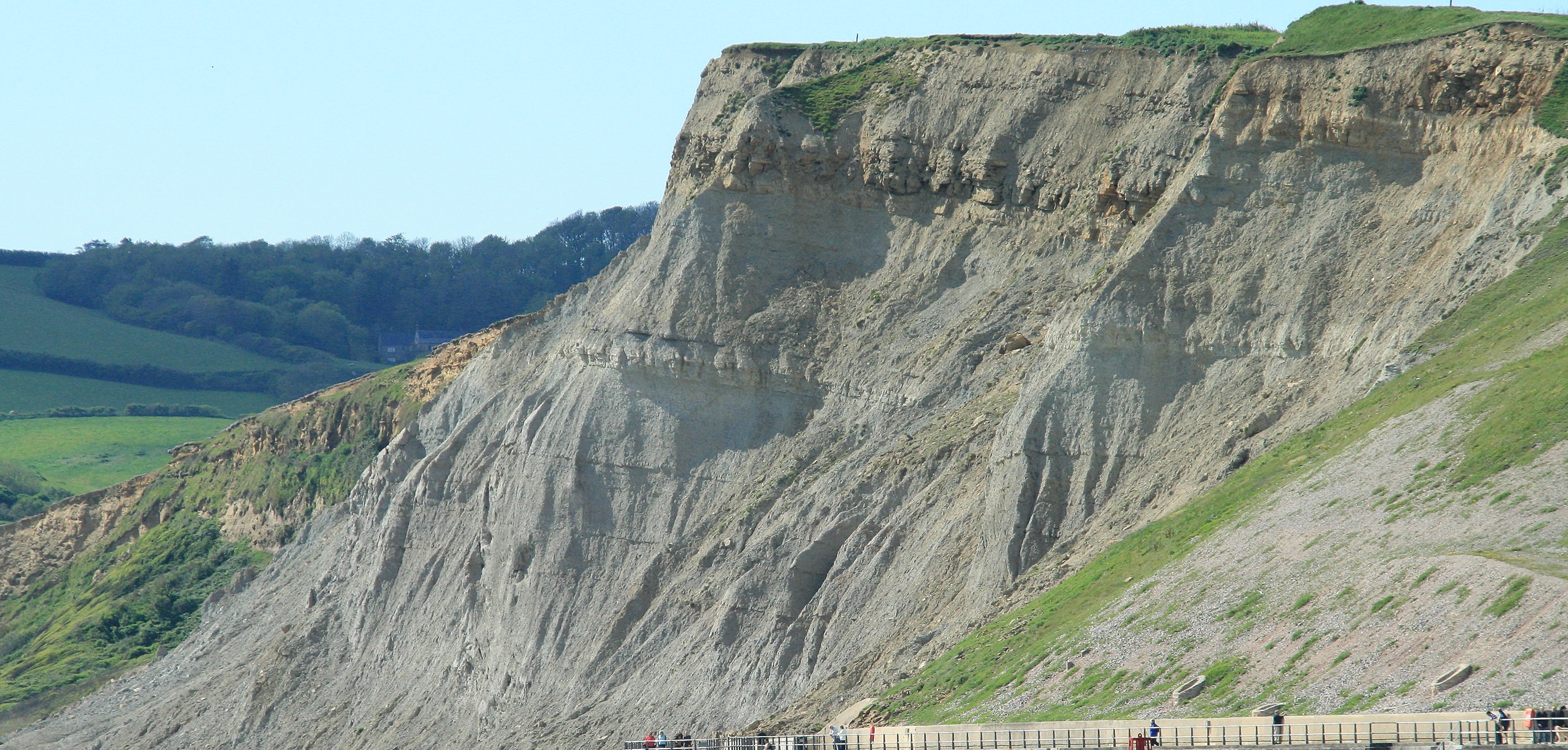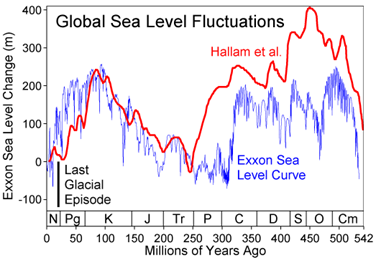
The Influence of Sea Levels

 |
West Bay Geology
The Influence of Sea Levels |
 |
Parts of the ocean that are made up of new Oceanic Crust are lighter than older parts, hence the times when large quantities of new ocean crust are being created will see higher than average global sea levels. In the Jurassic when Pangaea was just starting to split up, oceanic crust was relatively old, and hence sea levels were low.
Equally significant is the extent of shallow Continental Shelves in the oceans. An decrease in the area of shallow Continental Shelf areas will also cause average depths to increase and hence cause global sea levels at to go down. Consolidation of continental landmasses into super-continents such as happened with Pangaea leads to a decrease in the extent of Continental Shelves, leading to a lowering of sea levels.
If you have been following this, (and very well done if you have!), then you might be able to see that sea levels had two reasons to be lower than average at the start of the Jurassic. The graph below shows an estimate (in fact two separate estimates) of global sea level changes over geological time. The present day is to the left and the Jurassic is the period listed as "J" on the horizontal axis.

This shows the decrease in sea levels caused by the formation of Pangaea in the Triassic period (labeled Tr in the chart), and the gradual increase in sea levels happening throughout the Jurassic (and Cretaceous) periods, caused by the increase in Continental Shelf areas and also an increase in the amount of newer (and hence lighter) oceanic crust.
The final major impact of global sea levels if very pertinent to the present day. As we all know well, sea level increases are happening today due to melting of ice, in particular ice located on land (such as in Greenland and Antarctica) which locks water out of the oceans. At the peak of the last ice age sea-levels where around 100 metres lower than they are now. This led amongst other things to the English Channel which for much of its length has a maximum depth of 80 metres being mostly land. Over recent time the melting of the ice has led to an increase of sea levels of around 100 metres. It is well understood that there is more ice still to melt, most notably in Greenland and Antarctica, and that this will means that global sea levels will rise a few metres more. However it is interesting, and perhaps I little bit sobering, to understand that the ice related sea-level changes that we unfortunately might see due to global warming have, to a large degree, already happened. The black bar to the left of the chart below shows how far sea levels have already risen. What is left to happen, and the likely terrible consequences of this to low lying communities, will be just a tiny movement in comparison to the sea level changes that happen over geological timescales by the movement of the crustal plates.
The chart aboove shows that, in geological terms, sea levels are today very low compared to the average that has existed over the past 500 million years. The last time sea levels were this low was just before the start of the Jurassic, i.e. just as the rocks that we now see along the Dorset Coast were starting to be deposited. The chart shows that on a geological time scale we are bound to have significant sea level rises, measured in hundreds of metres, over the next few tens of millions of years, particularly if further continental break up happens in places such as East Africa and the Middle East, which seems very likely. Effectively we have an upward trend in sea level pretty much locked in. Now, these are very long time periods, and of course over this time many other things will also change. We could even find we go back to Ice Age conditions (it is quite possible that we are currently in some warm period within an ongoing Ice Age) and thus see a temporary lowering of sea levels as a result. However in the long run higher sea levels do appear inevitable. I am of course not saying we should all up sticks and move to the hills. But, I find it interesting to imagine what Dorset would look like if sea levels were 100 or 200 metres higher than they are now. Now, this won't happen anytime soon, but in average terms we probably have another 150 metres of sea-level rise ahead of us.
One final point to make is that sediment forming a delta or sands on a beach or a mud layer at the bottom of the sea is not a rock. The rocks that we see today were once these things, but to make them into a rock these deposits need to be consolidated. This consolidation requires increased temperature and pressure, and this means that the rocks need to be buried. So, to sum up, and taking the very beautiful golden sandstone that we see on East Cliff. The life history of this probably went something like this:
Next Section - Geological Faults
Previous Section - Types of Rocks
Back to Introduction